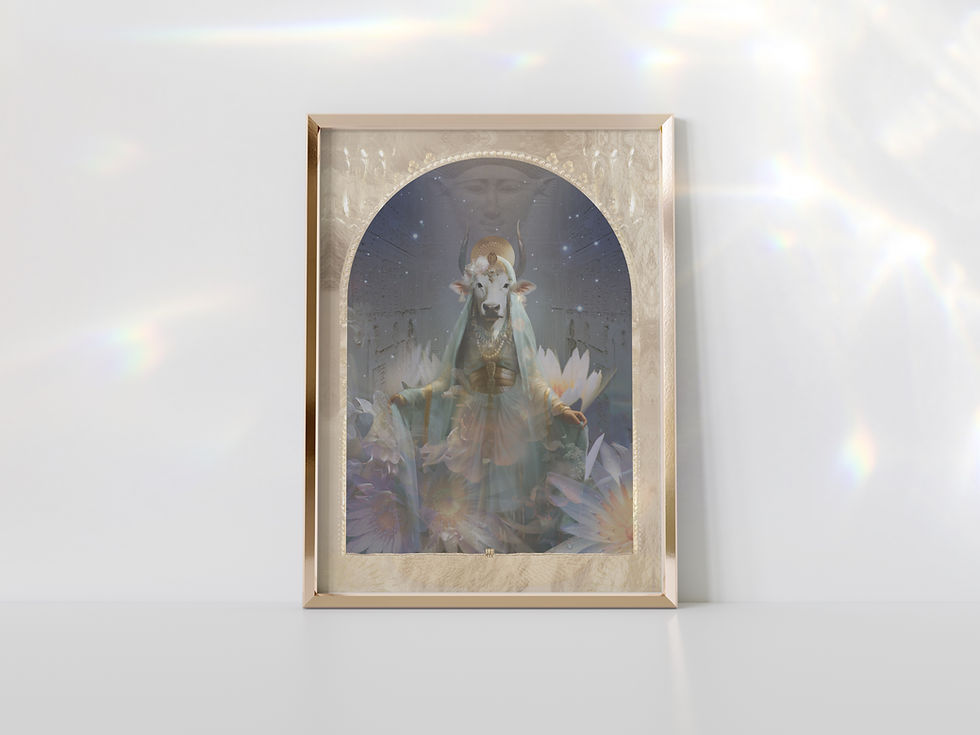What is the difference between Tarot and Oracle Cards?
- Prism + Fleur

- Jun 17, 2023
- 3 min read
Updated: Aug 29, 2023
Unlocking the Magic: Understanding the Difference Between Tarot and Oracle Decks
Tarot cards and Oracle cards have captured the fascination of individuals around the world.
While they share the common goal of providing spiritual and intuitive wisdom, they differ in their origins, structures, and usage. In this post, we will explore the distinct characteristics of tarot and oracle cards, shedding light on their unique qualities and how they can enrich your spiritual journey.
The Essence of Tarot:
Tarot cards have a rich history that dates back to the 15th century. A traditional tarot deck based on the Rider Waite system consists of 78 cards, divided into two categories: the Major Arcana and the Minor Arcana. The Major Arcana represents significant life themes and archetypal energies, while the Minor Arcana portrays everyday experiences and situations. Each card has its own symbolism and interpretation, allowing for deep exploration and nuanced insights into one's life.
The Versatility of Oracle Cards:
In contrast to tarot, oracle cards offer a greater degree of flexibility and creativity. Oracle decks vary widely in terms of the number of cards, themes, and designs, providing a vast array of choices for users. Unlike the structured system of tarot, oracle cards are not bound by specific rules or established meanings. They invite personal interpretation and intuition, making them accessible to both beginners and experienced readers. Oracle cards often focus on specific themes, such as angels, animals, chakras, or affirmations, allowing individuals to connect with their chosen topic more deeply.
Structure and Guidance:
The structure of tarot cards offers a comprehensive framework that provides guidance through intricate spreads and card combinations. The relationship between the cards in a tarot reading creates a narrative that offers a holistic view of a situation. The structured nature of tarot can be seen as a complete system, providing detailed insights into the past, present, and potential future outcomes. Tarot readings often delve into the subconscious, revealing underlying patterns and motivations.
Oracle cards, on the other hand, provide concise and direct messages. They are often used for daily guidance, affirmation, or for addressing specific questions. Oracle cards focus on a single card at a time, delivering simple yet profound messages. The imagery and words on the cards serve as triggers for intuition, sparking personal reflections and inner knowing.
Interpretation and Intuition:
Interpreting tarot cards requires knowledge of the traditional meanings and symbolism associated with each card. It demands practice and study to develop a deep understanding of the tarot system. Tarot readers rely on their intuition, but also draw from their knowledge of card meanings to provide comprehensive readings.
Oracle cards, on the other hand, rely more heavily on personal intuition and instinct. While some oracle decks may come with guidebooks or suggested meanings, the interpretation of oracle cards is primarily based on the reader's intuitive response to the imagery, symbols, and messages on the cards. The interpretation is fluid and open-ended, allowing the reader to tap into their own inner wisdom.
Tarot cards and oracle cards are both valuable tools for divination and self-reflection, offering unique approaches to exploring spiritual insights. Tarot provides a structured system with intricate symbolism, while oracle cards offer flexibility and personal interpretation. Whether you resonate with the rich history and complex narrative of tarot or prefer the creative freedom and direct messages of oracle cards, both can guide you on your spiritual journey and provide valuable insights into your life.
Shop Tarot and Oracle decks created by Prism + Fleur





















Comments